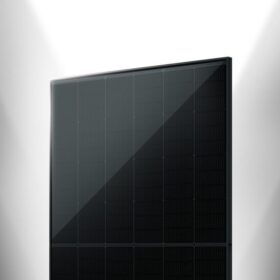India reaches 63 GW of annual PV module manufacturing capacity
India has reached an annual PV module manufacturing capacity of about 63 GW, according to the Ministry of New and Renewable Energy’s Approved List of Models and Manufacturers (ALMM).
Researchers claim record-breaking 25.7% efficency for perovskite-organic tandem solar cell
Conceived by a research team from Germany’s University of Potsdam and the Chinese Academy of Sciences, the tandem cell is based on a wide-bandgap perovskite bottom cell and a narrow-bandgap organic top device. The researchers used a compound known as cyclohexane 1,4-diammonium diiodide for suface passivation.
India imposes antidumping duties on solar glass from China, Vietnam
India’s Ministry of Finance has applied antidumping duties on solar glass imports from China in the range of $673 to $677 per metric ton and for imports from Vietnam at $565 per metric ton.
Stable GPM polysilicon prices post-antidumping duty rates, optimism on firm demand
In a new weekly update for pv magazine, OPIS, a Dow Jones company, provides a quick look at the main price trends in the global PV industry.
Trina Solar launches 760 W TOPCon module with 24.5% efficiency
The Chinese manufacturer said its new i-TOPCon Ultra panel is part of the Vertex N family and is intended for applications in utility-scale projects. It plans to begin mass production of the new modules in the second quarter of 2025, with an initial annual capacity of 10 GW.
Solargain digital twin integrates condition monitoring, quality assurance
Above Surveying, a U.K.-based services and software company, announced adding large-scale PV condition monitoring to its Solargain digital twin tool as a result of its partnership with Kiwa PI Berlin and 2DegreesKelvin.
US starts solar cell manufacturing to close supply chain gap
The “US Solar Market Insight Q4 2024” report, published by the Solar Energy Industries Association (SEIA) and Wood Mackenzie, states that domestic module manufacturing will be able to match the rapid pace of growth in the US solar industry, with cell production also ramping up.
Agrivoltaics for peppers
Scientists have built in India a 1.8 kW agrivoltaic setup to grow peppers under the PV modules. The proposed project design is described as an agrivoltaic insect net house that could be use for all crops that require rigorous pest management.
Swiss startup offers wavelength-selective PV system for agrivoltaics
Voltiris has launched its latest greenhouse pilot project, installing its novel wavelength-selective PV system at a vegetable growing farm in Canton Baselland.
Fraunhofer ISE, AMOLF unveil TOPCon solar cell based on metal nanowire grid front electrodes
The two research institutes used silver nanowire grids as an alternative to indium tin oxide for the cell’s transparent electrodes. They claim this is the first time that a metallic nanostructure offers photonic gain in a solar cell.










